@bin-chen,
You can use an aggregation for the latest n entries of a subset of documents in a collection. Here's a simplified example without grouping (which you would be doing between stages 4 and 5 in this case).
This returns the latest 20 entries (based on a field called "timestamp"), sorted ascending. It then projects each documents _id, timestamp and whatever_field_you_want_to_show into the results.
var pipeline = [
{
"$match": { //stage 1: filter out a subset
"first_field": "needs to have this value",
"second_field": "needs to be this"
}
},
{
"$sort": { //stage 2: sort the remainder last-first
"timestamp": -1
}
},
{
"$limit": 20 //stage 3: keep only 20 of the descending order subset
},
{
"$sort": {
"rt": 1 //stage 4: sort back to ascending order
}
},
{
"$project": { //stage 5: add any fields you want to show in your results
"_id": 1,
"timestamp" : 1,
"whatever_field_you_want_to_show": 1
}
}
]
yourcollection.aggregate(pipeline, function resultCallBack(err, result) {
// account for (err)
// do something with (result)
}
so, result would look something like:
{
"_id" : ObjectId("5ac5b878a1deg18asdafb060"),
"timestamp" : "2018-04-05T05:47:37.045Z",
"whatever_field_you_want_to_show" : -3.46000003814697
}
{
"_id" : ObjectId("5ac5b878a1de1adsweafb05f"),
"timestamp" : "2018-04-05T05:47:38.187Z",
"whatever_field_you_want_to_show" : -4.13000011444092
}
Hope this helps.
